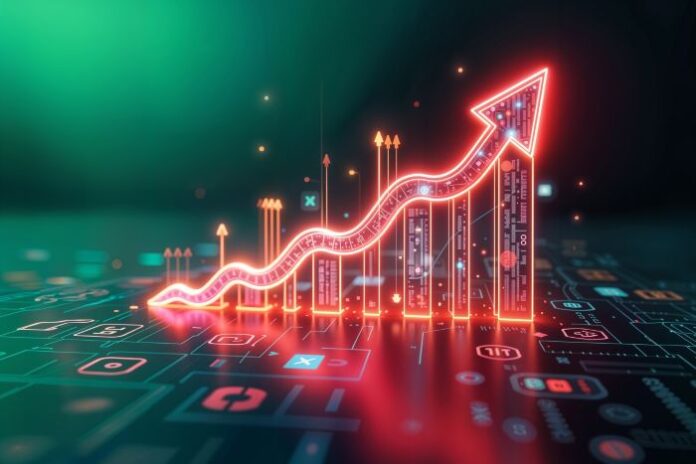2025 is here, and expert savings tips are already in high demand. Savings must be prioritized. It should be a deliberate series of actions, not an afterthought. With the New Year squarely in our sights, enhancing financial wellness and security is more important than ever. It begins with clearly formulated plans and a well-structured approach to achieving strategic objectives.
Given that 66.7% of Americans are contemplating financial resolutions for 2025, it’s safe to say that workable, easy-to-implement plans are best. Leading the way among savers as the top-ranking goal is the intent to save more money in the coming year. Of course, other strategic objectives rank highly on the ladder, like paying down debt. Spending less enables savers to put more money away for a rainy day. It’s all the same issue – dealing with the scarcity principle.
Naturally, there are effective ways to save money and achieve greater success. But the trick is knowing how to do so without disadvantaging yourself in the present. How do you live your best quality of life without sacrificing too much so that the future looks brighter than the present? One way is foregoing wasteful spending, unnecessary purchases, and habitual expenses for financial wellness.
Often, the costs we pay fall into the category of discretionary spending. Canceling or curtailing subscriptions and annual payments for unwanted software, apps, services, and other expensive habits is a good place to start. Cost savings through expenditure reduction can be funneled directly into savings plans to secure the future.
Table of contents
An Effective Plan for Tomorrow Starts Today

Technology is one of the most critical avenues available for cost savings. It presents us with a more efficient, effective, and efficacious way to get things done. One fine example is a receipt app that allows customers to enjoy cashback rewards on daily purchases. With limited exceptions, enjoying cashback, benefits, or substantial rewards from purchases at gas stations, restaurants, takeout, grocery stores, diners, and so forth can be challenging.
Technological advancements like a ranking receipt app on smartphones and tablets make it possible to shop as usual without sacrificing utility value. In other words, customers can register accounts with specialized receipt app services and enjoy unlimited rewards from providers affiliated with these programs. Among the top-ranking apps, some 50,000+ businesses (gas stations, grocery stores, restaurants, etc.) are already registered and fulfilling their mandate to offer cost-effective solutions to customers.
Choose To Save Today for Financial Wellness
The decision to save money is intentional. It is a deliberate action. By pre-committing a plan of saving money, like an emergency fund, a goal must be set up ahead of time. Then, you work backward to achieve that goal. Sometimes, it’s a monetary goal, and sometimes it is an objective that establishes security for a future date. It could be a lump sum such as $10,000 in savings by the end of 2025 or cost savings on gas consumption valued between 5% and 10% of total expenditure. Either way, tracking performance, correcting deviations, and working towards goal attainment is essential.
One of the easiest ways to save is automation. This is automatic savings that takes place by debit orders through your bank account (checking account) directly into a savings account, certificate of deposit, ETF, or cryptocurrency platform. As long as the savings is automatically completed, it’s unlikely that any attention will be paid to it. But by the end of the savings term, all the funding has already found a safe haven, hopefully with interest accruing on the principal amount.
On this topic, it’s essential to understand the implications of emergency savings. Accidents, tragedies, and emergencies routinely arise when we least expect them. And they often come with a heavy price tag – sticker shock. Whether it’s a plumbing emergency, an automobile accident, a medical emergency, or a family-related tragedy, it’s essential to be ready for these eventualities. It’s always a good idea to put a dollar figure in place, such as $1000, $2000, or $5000 for such events. You can incrementally work your way towards that by factoring in a forced savings figure or using cashback and rewards to meet the quotas.
Tax-Advantaged Benefits for Increased Savings
Tax-advantaged benefits are equally important when it comes to saving money for financial wellness. So many people are blithely unaware of these tax advantages. They can accrue by shifting things around ever so slightly. For example, a freelancer working as a sole proprietor can do so much better tax wise by switching to an S-Corporation or a Close Corporation. The tax savings can be used to fund retirement savings. By the same token, as much as possible should be taken from a salary, remittance, or wages, and fund a 401(k) which has tax benefits. It is only taxable upon retirement, and there are smart ways to reduce the tax liability in later years.
Naturally, all of this should be done within the aim of increasing savings for financial wellness during working years so that the non-working years are taken care of. By the same token, it’s imperative to incrementally increase savings (within acceptable limits) to reach money-saving goals as quickly as possible. There are always government-provided tax incentives to help working-class people save more money. If possible, seek out guaranteed returns with higher interest rates, and preferably compound interest. With stocks, seek dividend stocks with high growth potential.











